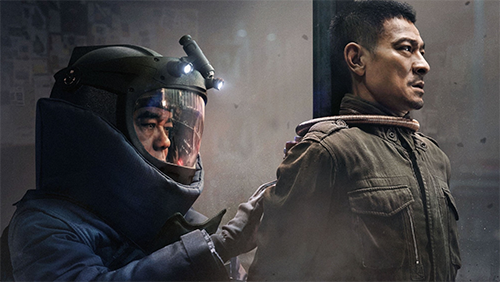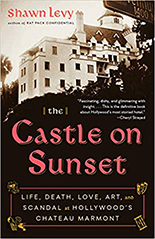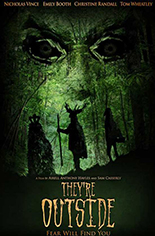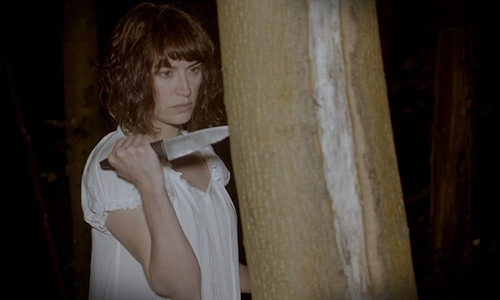
 In the first 15 minutes of this Asian actioner, a suicide bomber takes out a government office; two apartment residents are tied to synchronized, booby-trapped explosives; a jewelry store robber threatens hostages with live grenades; and Hong Kong International Airport is absolutely decimated, melting travelers and all.
In the first 15 minutes of this Asian actioner, a suicide bomber takes out a government office; two apartment residents are tied to synchronized, booby-trapped explosives; a jewelry store robber threatens hostages with live grenades; and Hong Kong International Airport is absolutely decimated, melting travelers and all.
Shock Wave 2, you have my full attention.
The country cowers in the face of danger as trust-fund terrorist Ma Sai Kwan (Kwan-Ho Tse, Nude Fear) masterminds Resurrection Day, a large-scale nuclear attack against Hong Kong. Sounds like a job for Explosive Ordinance Disposal Bureau Officer Poon Shing Fung (Andy Lau, The Great Wall) … except he no longer works for the police, having been booted from the force after losing a leg in the line of duty.
After a explosion rips through a hotel, Fung is not only found unconscious in the rubble, but accused of planting the C-4. Is he working undercover or has he gone rogue? Awaking from his coma with a concussion and post-trauma amnesia, Fung has no answers; he literally can’t remember, but he’s determined to find out and, if needed, clear his name.
You haven’t lived until you’ve seen a one-legged, wheelchair-bound Lau escape a hospital siege in his PJs — a blazingly choreographed sequence that gives Shock Wave 2 hard Fugitive vibes, but this time, the protagonist possesses the prosthetic. It pops off an alarming amount of times, too — not all for kicks, but because returning director Herman Yau (The Untold Story) injects the sequel with the message of disability not equalling dispensability.
Make no mistake: This is no sermon wrapped in Trojan-horse coating. It’s a monster of an action film that draws influence from America’s enormously popular mad-bomber blockbusters of the genre’s 1990s peak, primarily Speed and Die Hard with a Vengeance (with the EODB’s bubble-headed uniforms inspired by the science thrillers Outbreak and Sphere). While we have Die Hard sequels on the brain, it’s worth noting that while the forever-fantastic Lau also played the lead in 2017’s original Shock Wave, his character was different, as if Bruce Willis played cop John McClane just once, then was back as, oh, cop Lance Bloodstone or cop Chad Runyon. Either way, yippee-ki-yay. —Rod Lott



 It’s Friday night at the offices of the cash-strapped Click Clique website, where the employees have been summoned to a pitch meeting. For Halloween, with layoffs looming, they’ll run a clickbait listicle on the 13 most frightening viral videos, so the staffers take turns passing the wireless keyboard around the conference table to queue up their ideas, and
It’s Friday night at the offices of the cash-strapped Click Clique website, where the employees have been summoned to a pitch meeting. For Halloween, with layoffs looming, they’ll run a clickbait listicle on the 13 most frightening viral videos, so the staffers take turns passing the wireless keyboard around the conference table to queue up their ideas, and 






 In indie horror’s digital DIY era of today, everyone who wants to make a horror movie can and does. This floods the market with dreck — and because even dreck has a minute’s worth of good parts to craft an appealing-enough trailer and inspire an eyeball-grabbing cover — the market is rewarded with rental dollars from viewers left wanting. They’re Outside offers the opposite experience: File the trailer and poster art under “no great shakes,” but the movie itself is that increasingly elusive, rough-’round-the-edges gem.
In indie horror’s digital DIY era of today, everyone who wants to make a horror movie can and does. This floods the market with dreck — and because even dreck has a minute’s worth of good parts to craft an appealing-enough trailer and inspire an eyeball-grabbing cover — the market is rewarded with rental dollars from viewers left wanting. They’re Outside offers the opposite experience: File the trailer and poster art under “no great shakes,” but the movie itself is that increasingly elusive, rough-’round-the-edges gem.